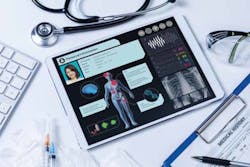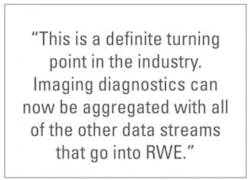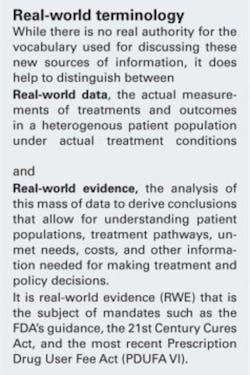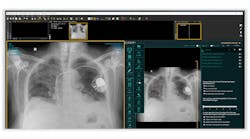Real-world evidence (RWE), based on data derived from a wide range of sources outside of a controlled clinical research setting, is increasingly important in improving patient outcomes and value across the healthcare system.
Diagnostic imaging is among the most important data source that has not yet been effectively integrated into RWE. Technical and administrative problems have held it back, but the time has finally come when imaging can become a fundamental part of RWE.
RWE as a mandate: From optional to integral
Looking ahead in drug development, generating reproducible evidence from multiple data assets is one of the key metrics for success at an inflection point. With the rapid pace to acquire and govern data assets, improving sensitivity behind hypothesis generation and early discovery, the biggest need for imaging and pathology data sits inside oncology and neurology pipelines.
Regulatory agencies are increasingly mandating RWE’s use in a wide variety of contexts. The FDA recently issued a guidance on the use of RWE, and the European Medicines Agency uses RWE for certain types of approval. The UK’s Medicines and Healthcare products Regulatory Agency (MHRA) is using RWE for some types of drug efficacy demonstration.
As a result, RWE is being included earlier in the evidence management life cycle to influence better trial design and feasibility, better trial execution (cohort identification, recruitment, adherence, and clinical end-point access), and better insights into post-market access.
Thus, the mounting pressure to partner with provider networks with the right data access strategy to improve identification of novel safety signals on drugs, devices, and other therapeutic interventions comes directly from regulators, public and private payers, and prescribers. While randomized clinical trials (RCT) provide the necessary measure of effectiveness under ideal conditions, RWE provides the context on how the intervention works in the real world for patient populations in their everyday environments. And it does so both rapidly and over time, enabling continuous feedback.
The real power behind moving RWE earlier in the lifecycle is that it is an experience-based living data set that constantly updates, allowing for questions to be answered and refined as the basis for new insights instead of waiting until Phase III or later.
In the modern era, there is virtually no impactful medical procedure or therapy that does not have diagnostic imaging associated with it. Yet, while the healthcare industry has spent decades standardizing claims, pharmacy, lab, and electronic health records (EHRs), it has thus far failed to effectively standardize and incorporate imaging at scale.
There is a high degree of non-interoperability in clinical imaging. One contributing factor is that the science of imaging is changing rapidly, with new generations of devices appearing annually. These are important developments influencing the quality of care, but rapid change makes it difficult to maintain standardization essential for interoperable image management.
Additionally, medical images have dramatically increased in file size. An MRI might be a moving digital file composed of thousands of separate images, requiring 500 gigabytes to be transferred and stored. This is a far cry from managing a five-digit current procedure terminology (CPT) code.
Lastly, the lack of common standards made it extraordinarily difficult to access data sets of imaging biomarkers across clinical workflows and across large trial networks globally.
So, despite the recognized need, an entire industry of clinical researchers and data scientists has been built essentially without image data. Up to now, the barriers have been too difficult to surmount.
However, we have reached a point of technological maturity where it is finally possible to acquire large amounts of image data, normalize it, transmit it, store it, and analyze it. This is a definite turning point in the industry. Images can now be aggregated with all of the other data streams that go into RWE.
As of yet, the awareness of this availability of clinical imaging has not fully penetrated the community of those who manage the evidence life cycle, but it’s coming.
One reason, of course, is that the imaging must be processed, integrated, and managed in a specific way in order to be truly useful. And that requires certain hard-earned capabilities.
What is required for clinical image data to be useful for RWE?
While the medical community acknowledges that medical imaging provides high-quality data with material clinical utility, in order to be truly useful for RWE on a broad scale, imaging data must meet five requirements.
- Come from a wide range of varied locations
Data from one hospital network or even group of imaging centers will only provide data on a restricted patient profile with likely inherent bias. The information will inevitably be limited by population, geography, type of care, and physician expertise. Data must be available from a wide range of research and non-research sites. - Represent a large volume from each of those locations
In addition to the breadth of data from various locations, there must be a large volume of imagery from each location. This is clearly a place where big data is essential. Effective algorithms, driven by deep or machine learning models, can only be developed when they have a vast number of examples to work on, and the lack of context-sensitive imaging data from a large cohort of a heterogenous population has slowed the development and training of useful models. - Be tied closely to the context of clinical decision making
But in addition to the breadth and depth of data, RWE must also come in the context of clinical decisions, whether diagnosis, treatment, or follow-up—all connected intimately with all of the options, confirmations, and corrections that comprise clinical workflow. RWE’s real strength comes from how it’s generated from practical workflows, how patients adhere to therapy, and how reimbursement affects treatment. - Be device agnostic and fully interoperable
Imaging has to be easily available from any capture device and in standard formats. Even when images ostensibly come in the same format, images from devices from one manufacturer can differ significantly from those from another and must be normalized to be useful. A high degree of technical interoperability, with the ability to pull data from disparate picture archiving and communications systems (PACS), dermatology cameras, PET scans, or elastography indifferently, is essential. - Be unambiguously indexed to a specific patient
EHRs have a singular identification of each patient so that each piece of data and each encounter can be mapped to a specific individual. In medical imaging, each device type, storage system, and provider workflow uses different information to reconcile patients. The creation of a master patient index enabling reconciliation of patients with a high degree of confidence is essential for making imaging data available at scale.
Satisfying all five requirements enables a wide range of federated longitudinal queries on integrated, normalized, wide, and deep databases of images.
How to effectively incorporate image data into the entire evidence cycle
We are currently seeing a major consolidation of commercial health information exchange (HIE) networks, as various competitors seek to gain market dominance by becoming aggregators of healthcare data; and the drive for unique and informative data types is escalating.
But there is still no commercial source of real-world data (RWD) that fulfills all the requirements for useful medical image data and integrates into their full RWE offering. Networks that include a market-leading expert in handling large amounts of medical image data will be able to bring badly needed efficiencies to RWE. These new consortia will be able to finally provide the long-desired integration of clinical imaging into RWE.






